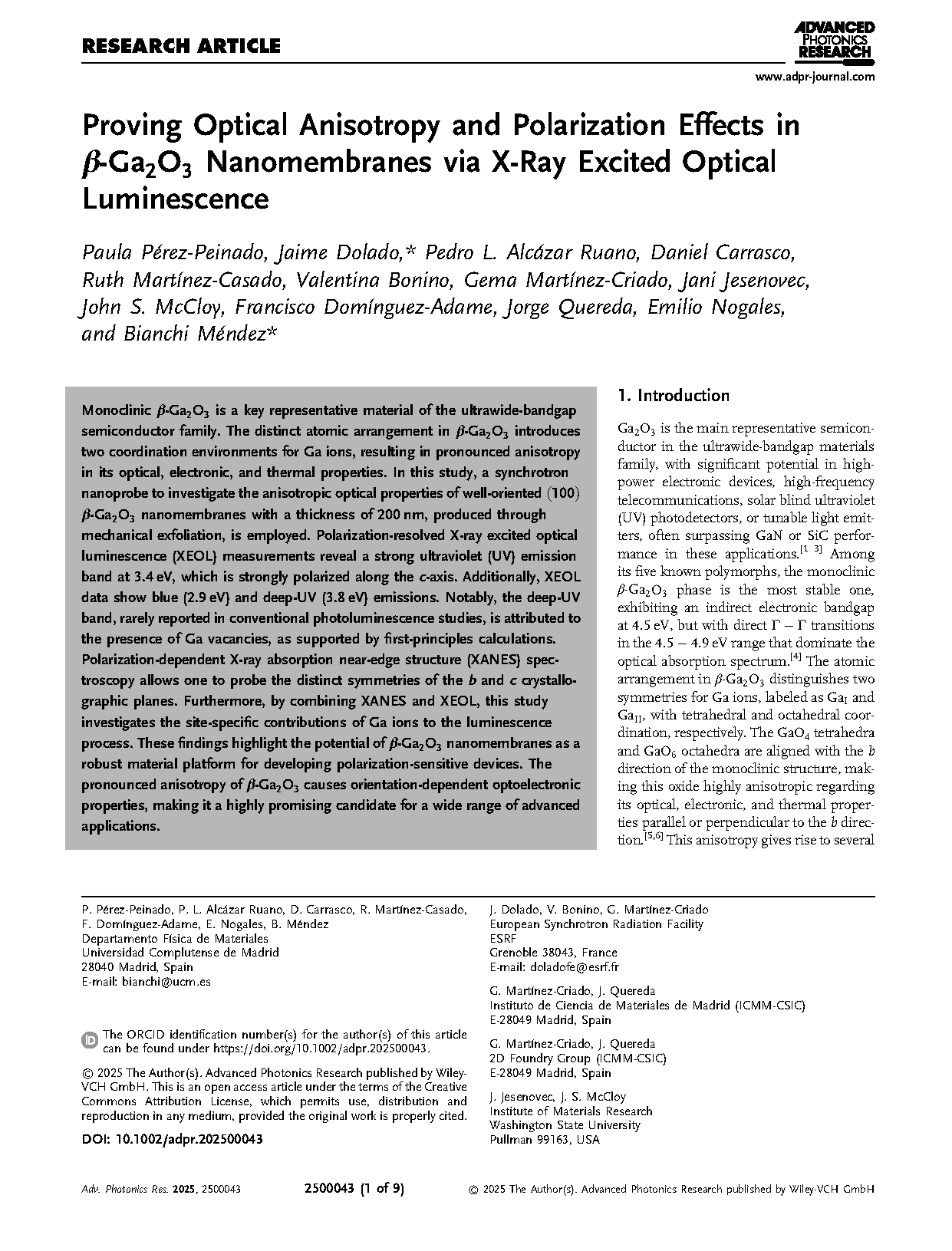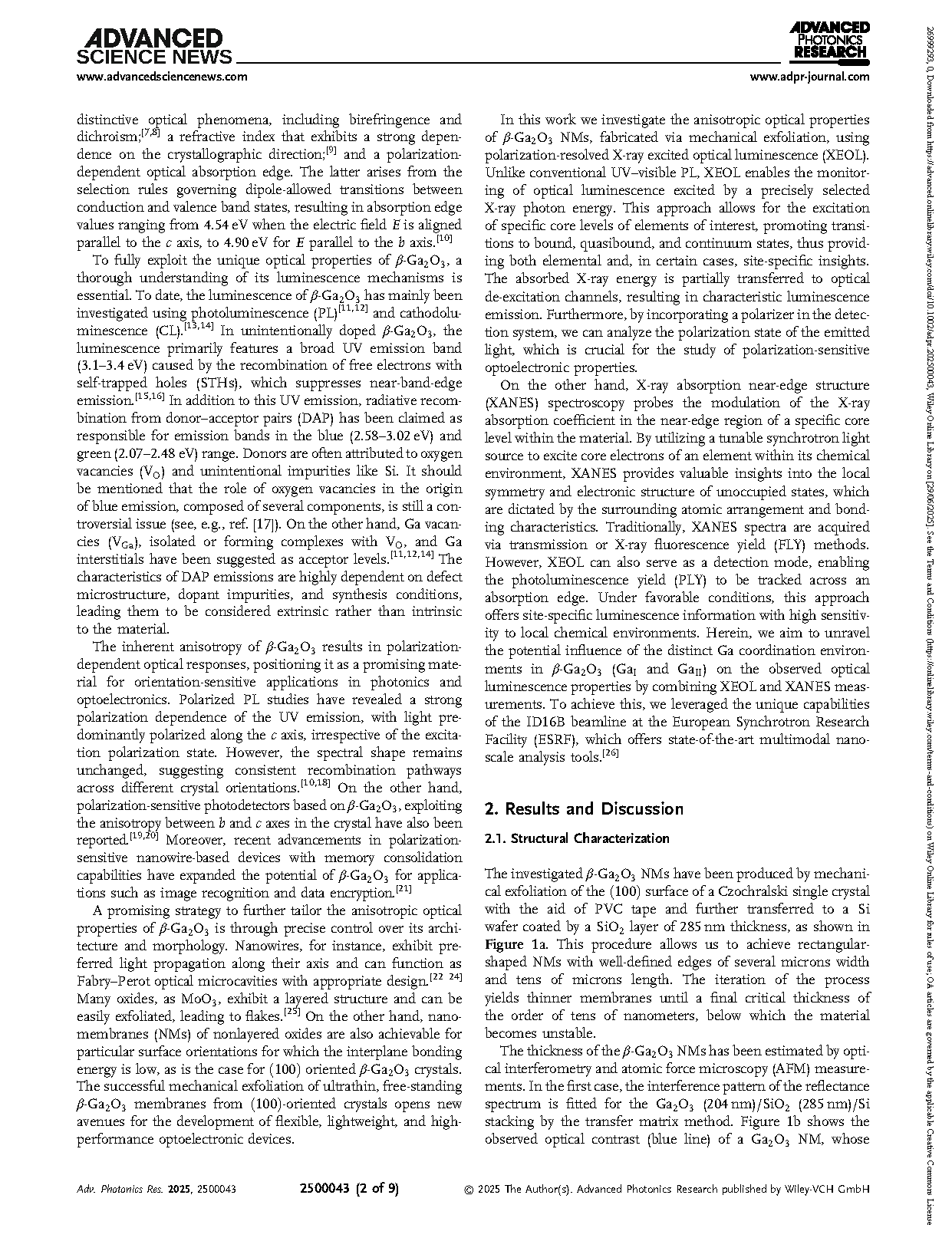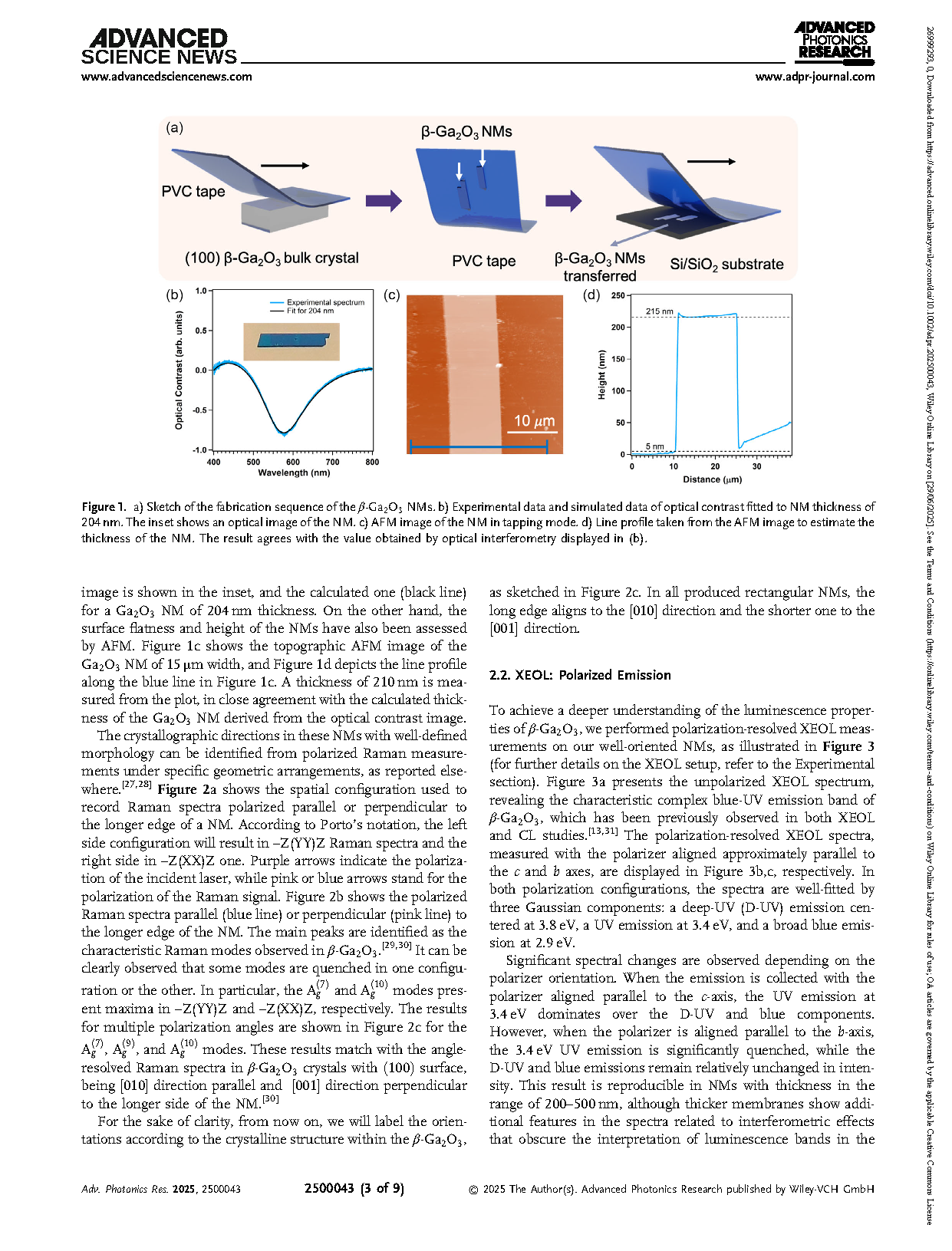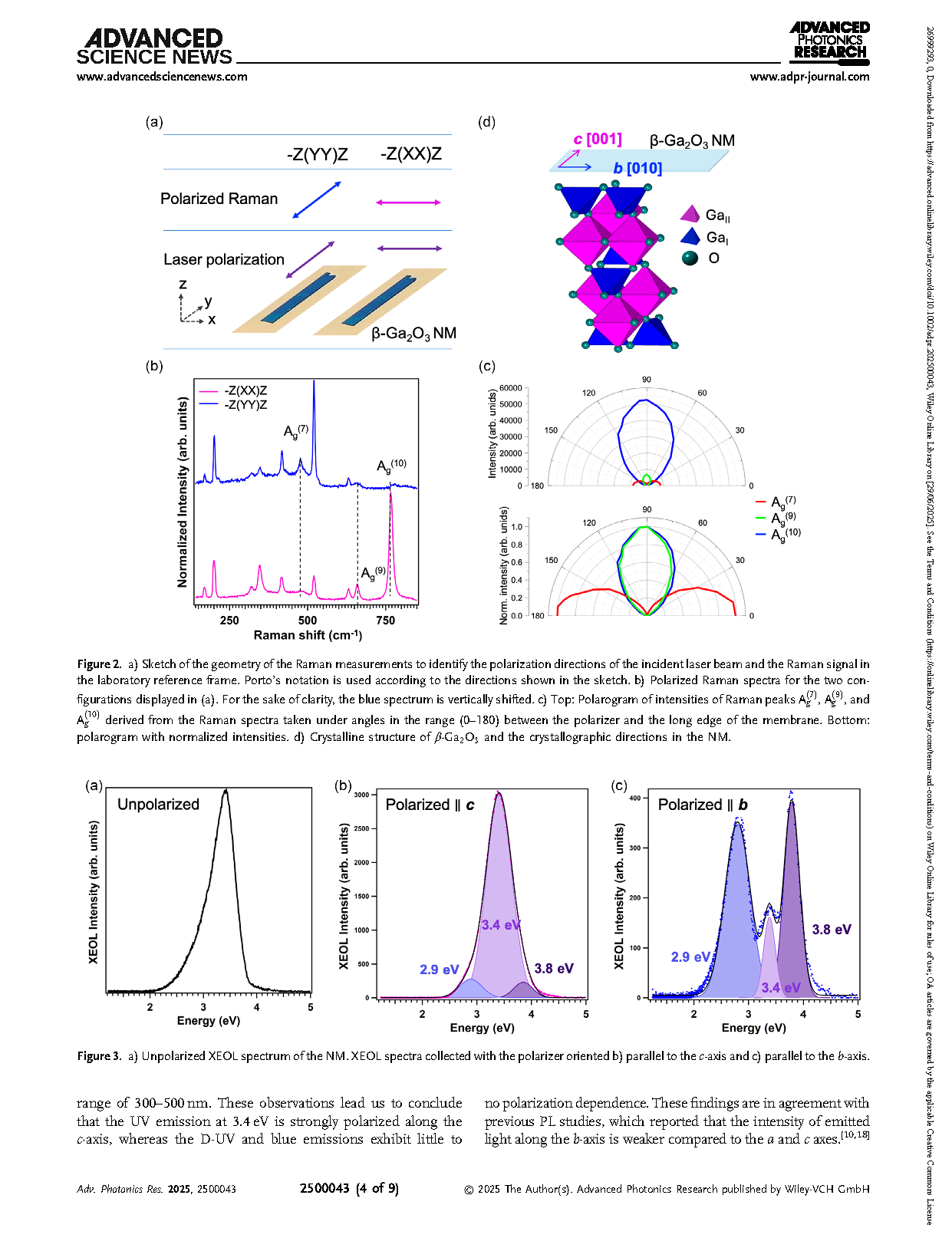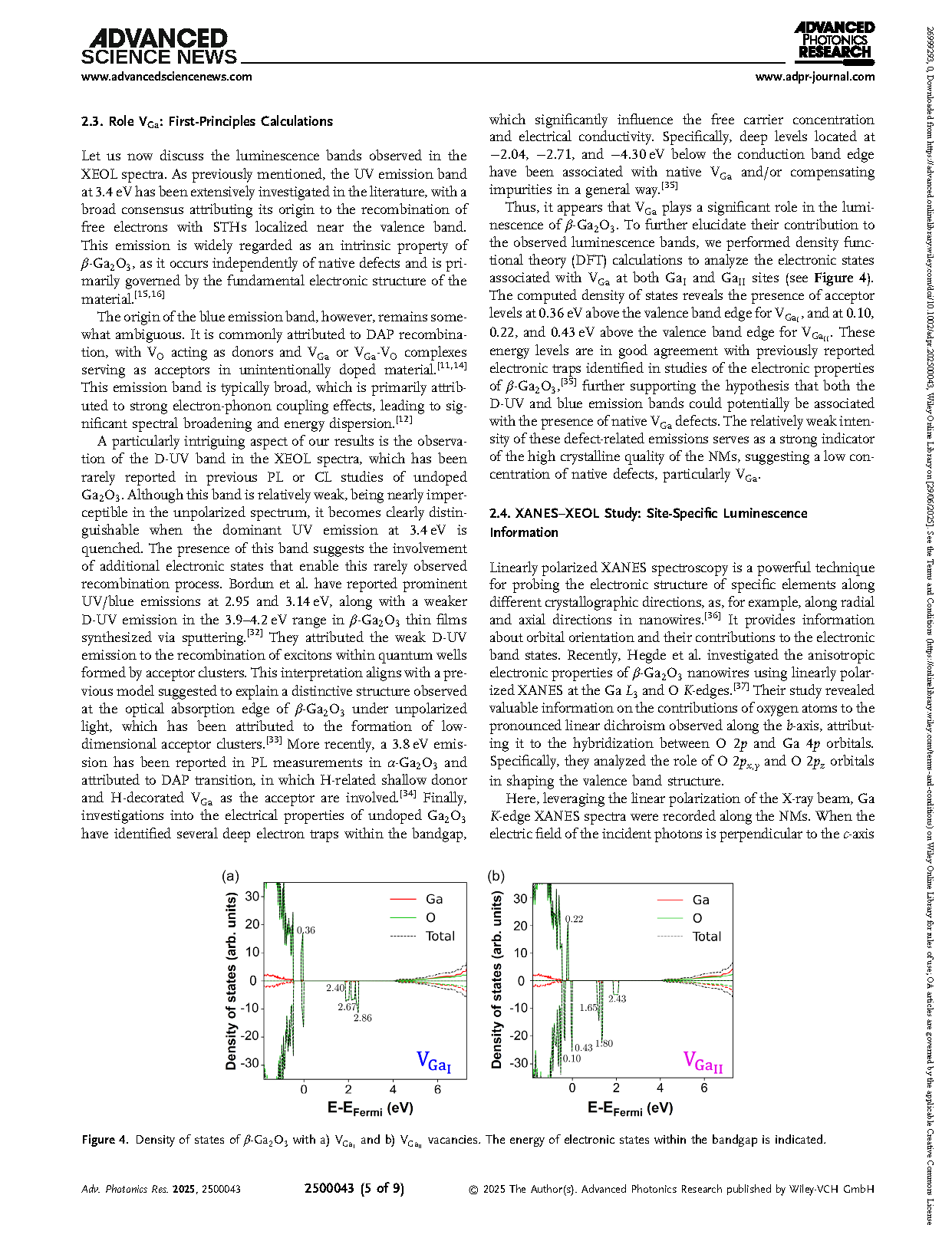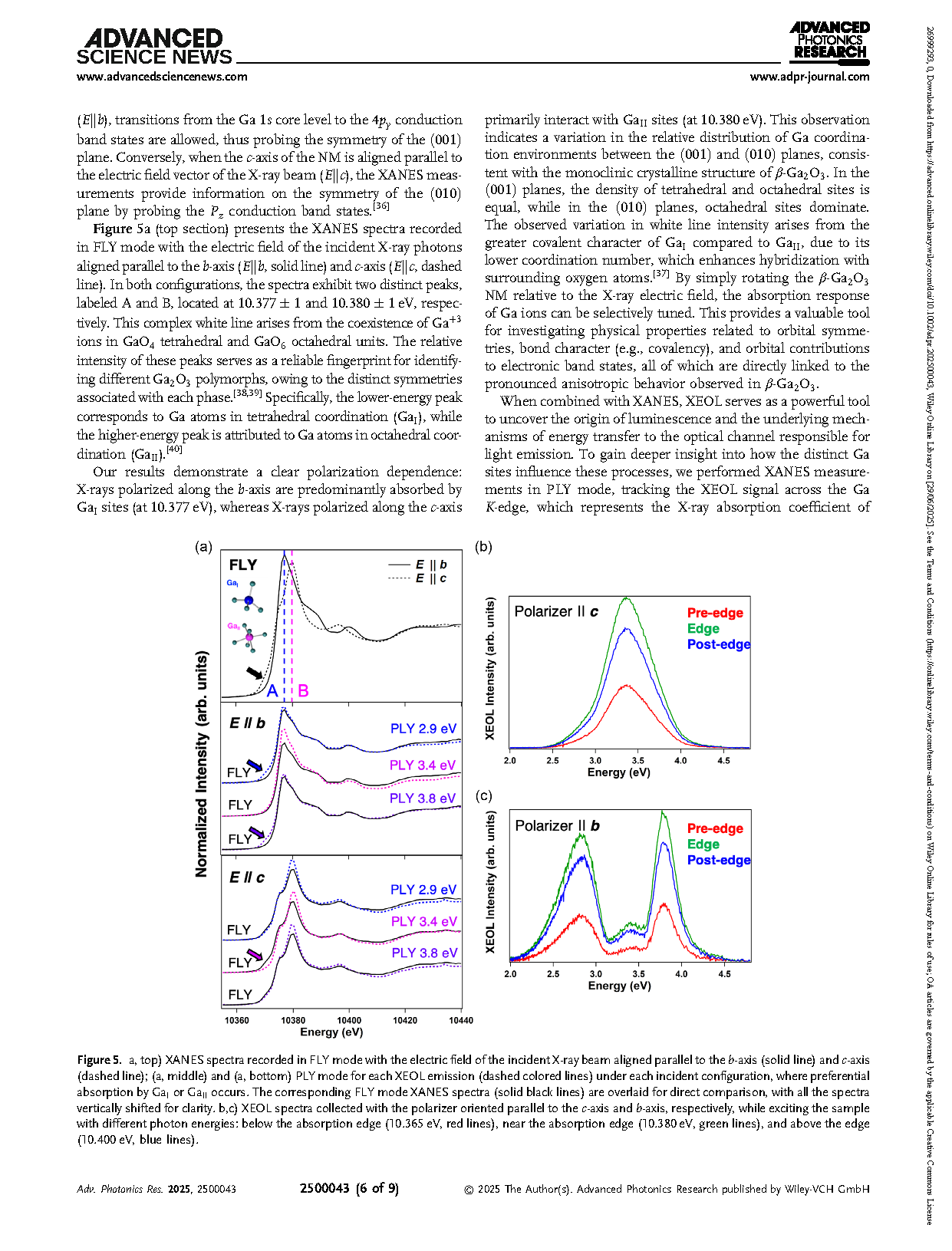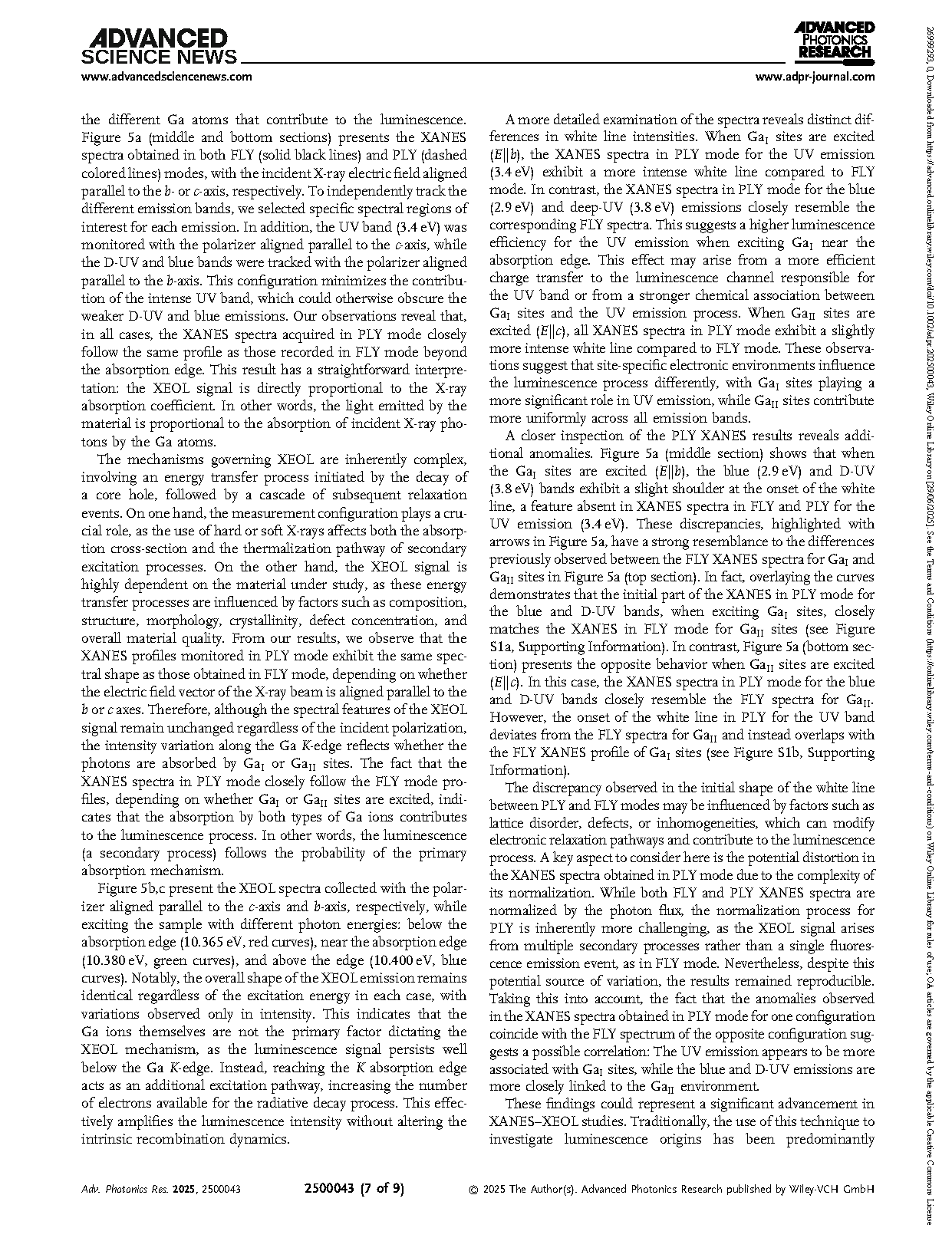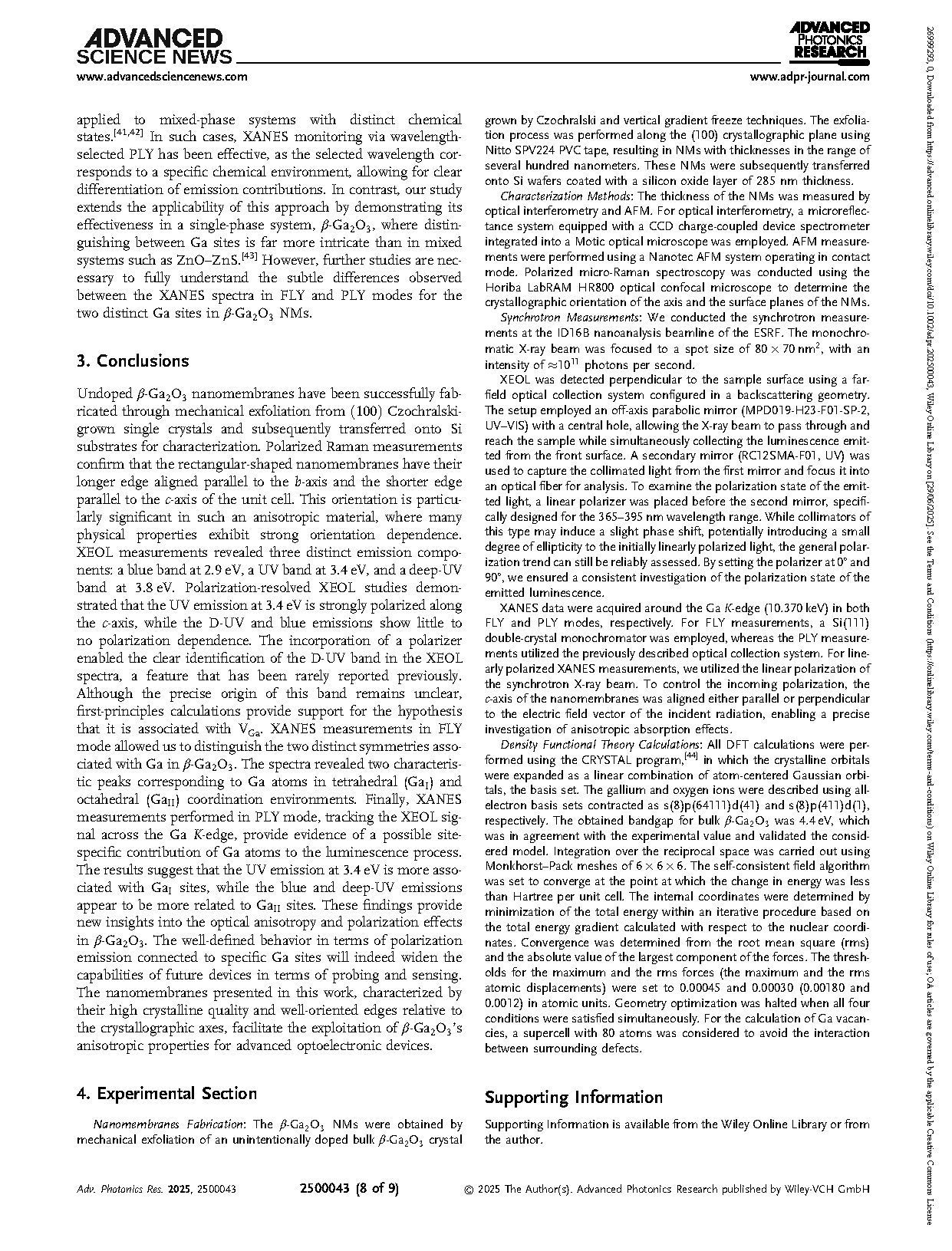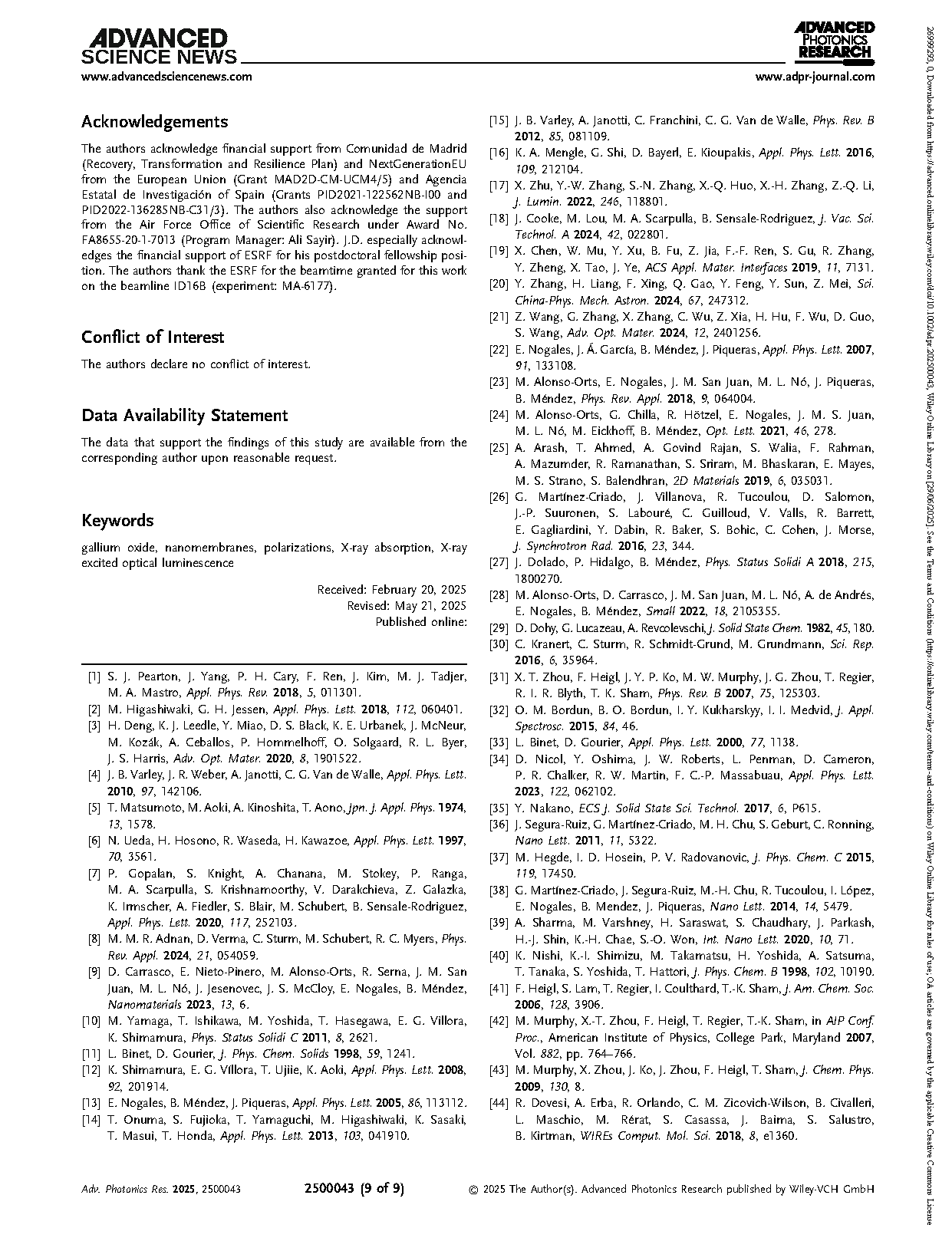

【International Papers】Proving Optical Anisotropy and Polarization Effects in β-Ga₂O₃ Nanomembranes via X-Ray Excited Optical Luminescence
日期:2025-07-23阅读:255
Researchers from the Universidad Complutense have published a dissertation titled "Proving Optical Anisotropy and Polarization Effects in β-Ga2O3 Nanomembranes via X-Ray Excited Optical Luminescence" in Advanced Photonics Research.
Abstract
Monoclinic β-Ga2O3 is a key representative material of the ultrawide-bandgap semiconductor family. The distinct atomic arrangement in β-Ga2O3 introduces two coordination environments for Ga ions, resulting in pronounced anisotropy in its optical, electronic, and thermal properties. In this study, a synchrotron nanoprobe to investigate the anisotropic optical properties of well-oriented (100) β-Ga2O3 nanomembranes with a thickness of 200 nm, produced through mechanical exfoliation, is employed. Polarization-resolved X-ray excited optical luminescence (XEOL) measurements reveal a strong ultraviolet (UV) emission band at 3.4 eV, which is strongly polarized along the c-axis. Additionally, XEOL data show blue (2.9 eV) and deep-UV (3.8 eV) emissions. Notably, the deep-UV band, rarely reported in conventional photoluminescence studies, is attributed to the presence of Ga vacancies, as supported by first-principles calculations. Polarization-dependent X-ray absorption near-edge structure (XANES) spectroscopy allows one to probe the distinct symmetries of the b and c crystallographic planes. Furthermore, by combining XANES and XEOL, this study investigates the site-specific contributions of Ga ions to the luminescence process. These findings highlight the potential of β-Ga2O3 nanomembranes as a robust material platform for developing polarization-sensitive devices. The pronounced anisotropy of β-Ga2O3 causes orientation-dependent optoelectronic properties, making it a highly promising candidate for a wide range of advanced applications.
Conclusions
Undoped β-Ga2O3 nanomembranes have been successfully fabricated through mechanical exfoliation from (100) Czochralski-grown single crystals and subsequently transferred onto Si substrates for characterization. Polarized Raman measurements confirm that the rectangular-shaped nanomembranes have their longer edge aligned parallel to the b-axis and the shorter edge parallel to the c-axis of the unit cell. This orientation is particularly significant in such an anisotropic material, where many physical properties exhibit strong orientation dependence. XEOL measurements revealed three distinct emission components: a blue band at 2.9 eV, a UV band at 3.4 eV, and a deep-UV band at 3.8 eV. Polarization-resolved XEOL studies demonstrated that the UV emission at 3.4 eV is strongly polarized along the c-axis, while the D-UV and blue emissions show little to no polarization dependence. The incorporation of a polarizer enabled the clear identification of the D-UV band in the XEOL spectra, a feature that has been rarely reported previously. Although the precise origin of this band remains unclear, first-principles calculations provide support for the hypothesis that it is associated with VGa. XANES measurements in FLY mode allowed us to distinguish the two distinct symmetries associated with Ga in β-Ga2O3. The spectra revealed two characteristic peaks corresponding to Ga atoms in tetrahedral (GaI) and octahedral (GaII) coordination environments. Finally, XANES measurements performed in PLY mode, tracking the XEOL signal across the Ga K-edge, provide evidence of a possible site-specific contribution of Ga atoms to the luminescence process. The results suggest that the UV emission at 3.4 eV is more associated with GaI sites, while the blue and deep-UV emissions appear to be more related to GaII sites. These findings provide new insights into the optical anisotropy and polarization effects in β-Ga2O3. The well-defined behavior in terms of polarization emission connected to specific Ga sites will indeed widen the capabilities of future devices in terms of probing and sensing. The nanomembranes presented in this work, characterized by their high crystalline quality and well-oriented edges relative to the crystallographic axes, facilitate the exploitation of β-Ga2O3's anisotropic properties for advanced optoelectronic devices.
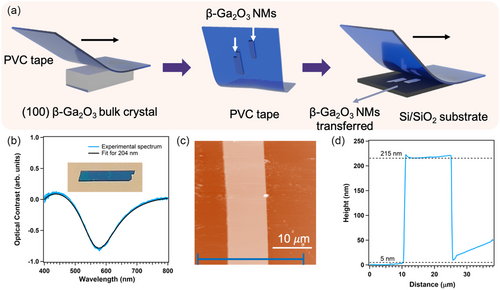
Figure 1. a) Sketch of the fabrication sequence of the β-Ga2O3 NMs. b) Experimental data and simulated data of optical contrast fitted to NM thickness of 204 nm. The inset shows an optical image of the NM. c) AFM image of the NM in tapping mode. d) Line profile taken from the AFM image to estimate the thickness of the NM. The result agrees with the value obtained by optical interferometry displayed in (b).

Figure 2. a) Unpolarized XEOL spectrum of the NM. XEOL spectra collected with the polarizer oriented b) parallel to the c-axis and c) parallel to the b-axis.
DOI:
doi.org/10.1002/adpr.202500043
